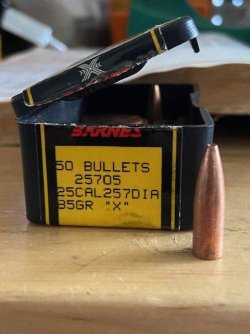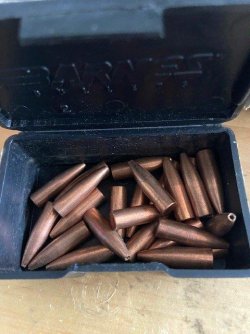My experience on over 40 animals has been just the opposite!! But - in almost all instances the shot placement has been perfect.
I'd be interested to know what shot placement both you and manitou have used, out of what cartridges and with what weight of Barnes bullet at what velocity haha.
I know I know, so needy for information over here!!!
But I've known people who have had nothing but good experiences with Barnes and people who have sworn never again after multiple bad ones. I do not beleive it's just because the ones having bad experiences are bad shots or hunters, as they've had great results with others.
My pet theory is that it is indeed about sectional density, impact velocity, and the kind of resistance met, especially with these monos. Case in point: 4 of my hunting friends of all different age groups LOVE the Barnes and have nothing but success stories on all manner of North American game. The cartridges have been
284 win with 140 tsx
300 win mag with 180 tsx
257 weatherby with 100 ttsx
6.5x55 Swede with 120 ttsx.
All of those cartridge bullet combos hit 3000 fps muzzle velocity, obviously the Weatherby's goes much faster still.
A fella I know refuses to use them in anything after witnessing fmj type wounds and LOOOOOOOONG tracking jobs, slow deaths, using meatsaver lung shots on deer size game with 180s out of a 308 Winchester. Way too high a sectional density in relation to how tough that bullet is and how light of resistance it was meeting at such a low impact velocity in comparison. He sings the undying praises of Nosler ballistic tips and hornady sst and such bullets and, given that he insists on using heavier bullets out of a .308 to only take broadside lung shots on deer sized game, it's no surprise!
With the Barnes it really does seem lighter and faster is better and try to drive them through as much resistance as possible, they're getting through.


